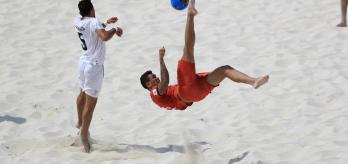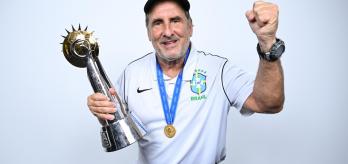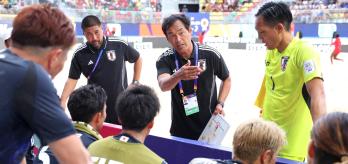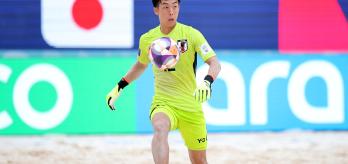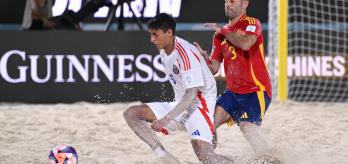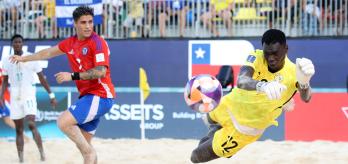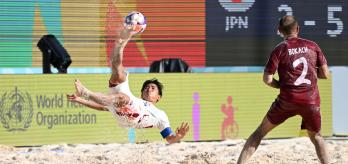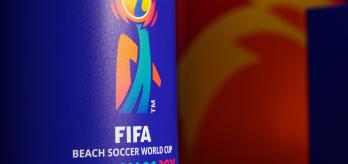With 230 goals scored in the opening 24 games, the TSG have noted some interesting themes around how these goals were scored and, in this article, TSG members Angelo Schirinzi and Matteo Marrucci give their thoughts on how goal-scoring is influencing the evolution of the game.
In addition, goalkeepers have already scored 9 goals at this tournament (compared to a total of 11 during the last World Cup in 2024) while 71% of attempts at goal on target have been saved during the group phase, further fuelling the discussion on the growing importance of the role of the goalkeeper.
For Angelo Schirinzi, a key takeaway from the opening stages of the tournament is the growing need for teams to be tactically versatile in addition to the conditioning and mindset of the players.
“Teams must be able to play in different ways and adapt to the match conditions and opponent. The speed of the game is so fast, and being able to mix it up makes you less predictable for your opponent. The physicality, explosivity, power and endurance of the players are all exceptional, and this is allowing them to to complete more actions while they are on the pitch, and we are seeing that all 12 players in the best squads are at this level. Players can switch from attacking to defending and get into positions very quickly. They are pressing, double pressing, the work rate and mentality of the players is so high and at this stage it is impossible to know which teams will progress to the final, because all four quarter-finals are so evenly poised,” he explained.
Marrucci agrees: “Obviously, with the last World Cup having taken place only 15 months ago, there are a lot of similarities with most of the squads, but I like how teams are using different strategies in different games, and they are not playing the same way in every match. Some of the attacking strategies have been really interesting – Japan, Senegal and Seychelles, for example – and teams are developing their own way of playing football in the sand and creating their own identities, showing there are different ways to win that are not necessarily conventional.
“While there are no real surprises in who reached the quarter-finals, we can see the growth and development in teams that didn’t progress, and the experience gained in this tournament will stand them in good stead as they continue to develop. The host nation, Seychelles, showed they have real potential and have maybe exceeded some people’s expectations. The synergy with their supporters is really very special and they have created an incredible atmosphere around their games,” he added.
Schirinzi also acknowledged the exceptional standard of goalkeeping:
“The demands on the modern goalkeeper in beach soccer continue to grow. I have to say, both in possession and in shot-stopping, the statistics back up the performance levels and I believe this year is a new benchmark for national team standard. It’s the highest level of goalkeeping I have ever seen with their hands, feet, decision-making, athleticism and the ability to protect their goals.”
Goals scored
With 230 goals scored to date, there has been real diversity in the types of goals scored.
149 goals (65%) have been scored from open play, including 46 individual goals, 27 goals from combinations, 31 from counter-attacks and 45 from direct attacks. In addition, 81 goals (35%) have been scored from set plays, demonstrating the importance of being able to score in different ways.
As Schirinzi explains, “The speed of the game is so fast, and being able to mix it up makes you less predictable for your opponent. Direct attacks and combination attacks disturb opposition defences in different ways but can be equally effective. With 31 goals scored from counter-attacks, it is also clear that teams must have plans in place to deal with transitions, both defensively, in terms of their structure, but also to recognise when and where their opponent is vulnerable in transitions to attack. There is very little time to think, and the distances are very short, so this is why teams must have plans for transitions to attack and defend.”
Direct attacks
With 45 goals (31% of all open-play goals and 20% of the overall total) being scored from direct attacks, it is clear how important these fast, efficient attacks can be, whether initiated by the goalkeeper or an outfield player.
According to Schirinzi, “It is important to be able to construct plays from the goalkeeper in the 1-2-2 formation, but you can also succeed with direct long balls from the goalkeeper to the pivot player to link in with other players. This is classic beach soccer, but it is very impactful to be able to score in this way.”
As of the end of the group stage, goalkeepers have made a total of 42 goal contributions, with nine goals scored and 33 assists, highlighting their importance in terms of how their teams attack.
“The best goalkeepers must be very competent with their distribution with their feet and from their hands, and if a team has two goalkeepers at this level, it is an advantage,” explains Schirinzi.
For Matteo Marrucci, this data further highlights the conundrum of how coaches must devise plans to exert pressure on opposition goalkeepers:
“Teams are using the time of four seconds permitted as a type of pressure, but we are also seeing that teams don’t want certain opposition goalkeepers to play with their feet comfortably. Teams are strategic about how, why and when they press high in different phases of the game, depending on the score, the energy of the team, the time of the match etc... but with the growing impact that goalkeepers are having in the attacking phase, defending teams need strategies to affect this.”
Goals with 3+ passes in build-up
Of the eight teams that progressed to the quarter-finals, seven have scored at least four goals that featured a minimum of three passes in the build-up. Keeping the ball in the air or moving it accurately on the sand for consecutive passing phases is difficult, but the ability to score goals by combining and constructing attacking patterns involving multiple players is a real asset.
A total of 63 goals (27%) have been scored in this way, with Belarus ranked number one so far, with 12.
Schirinzi notes, “I like the quality and creativity in how teams are building their attacks. It’s also clear how demanding these combinations are from a technical point of view. We are seeing the game-intelligent decisions and movements that players are making. Players are consciously picking out team-mates in better or more opportune positions, rather than shooting wildly.”
Set play creativity
Set plays continue to be a crucial way of scoring goals, with 81 (35% of the total scored in the group stage) coming in this phase of play.
As Schirinzi explains, it is vital that teams work on these routines, as they are now a fundamental part of overall tactical strategy.
“The best teams have clear set-play routines, and if teams have not done this work, they are already at a disadvantage in the game against teams that have prepared theirs. Coaches must include set-play training in their sessions; even if players do not enjoy this work so much, it is a vital part of the game now."
Goalkeeper saves
During the group stages of the FIFA Beach Soccer World Cup 2025, the standard of goalkeeper saves also piqued the interest of our TSG. In total, there were 556 saves from 807 attempts on target, with 230 goals scored, including one own goal. (These figures include penalties but exclude penalties after extra-time).
71% of attempts at goal have been saved by goalkeepers, which highlights their importance when their team is out-of-possession. According to Schirinzi, “This is a very strong number and highlights again the role of the goalkeeper in the team. We have seen some remarkable saves in the tournament so far, placing so much importance on their positioning, physicality, power and explosivity. The work with goalkeepers away from tournaments is even more important now than ever.”
The quarter-finals
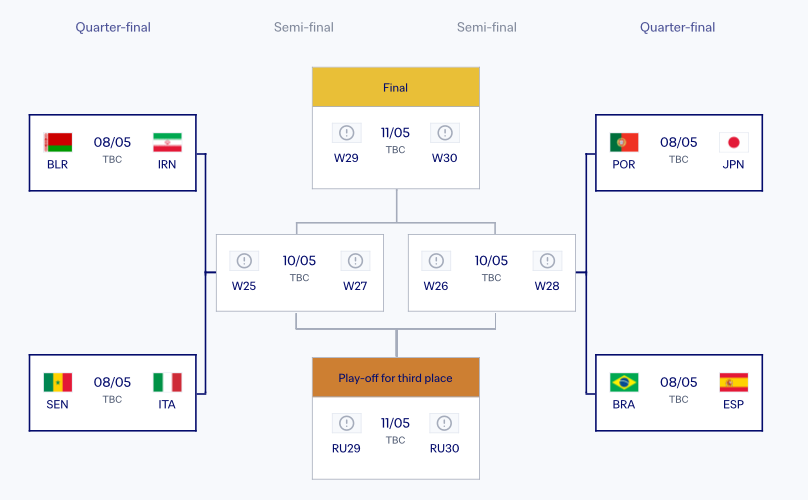
For Matteo Marrucci, predicting the two teams that will make it to the final is an impossible task:
“The best eight teams are in the quarter-finals, but there are more teams in contention to win the trophy this year compared to last year. If any of the eight teams won the tournament this year, it would not be a real surprise, because they all have so much quality. I honestly think this is the most competitive Beach Soccer World Cup that I can remember, and that is very exciting. There is a balance of quality at the top level and no game is predictable.
“The little details can really make the difference in this World Cup, and this adds pressure to the decisions of players and coaches because the concentration levels must be so high. It also places a greater emphasis on squad depth. Transitions are also very important, especially in very tight games, because we are seeing how the teams that manage the transitions best win!”




